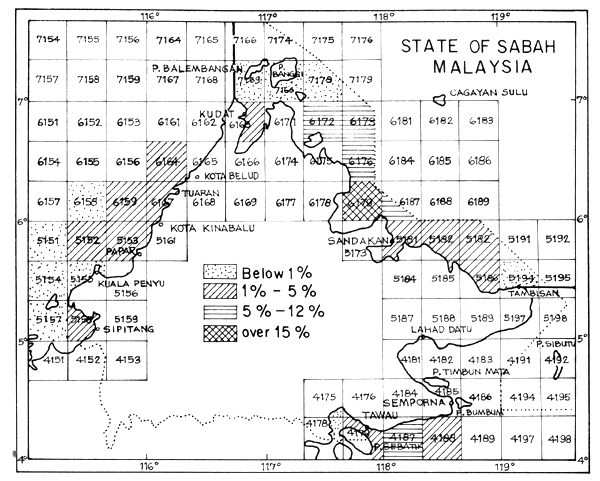(WDRCF/82/WP3)
The Status of the Rural Coastal Fisheries in Sabah
by
Leo Michael Wong
1. INTRODUCTION
The east, north and west of the state of Sabah (East Malaysia) borders the Sulawesi Sea, Sulu Sea and South China Sea, respectively. Sabah has approximately 1 500 km of coast-line (Fig. 1). Fishing is mostly limited to the coastal seas within 12 or even six nautical miles from the shore in some areas. Table 1 shows the yearly fish landings of marine fishes for the period 1970–1980. From the twelve coastal districts for statistics collection purposes, there are four important marine fish landing districts responsible for 59.8 percent of the total 1979 landings, comprising Sandakan receiving 16.7 percent of the total, Semporna 16.1 percent, Kota Kinabalu 14 percent and Tawau 13 percent.
| Year | Estimate marine landings (2 000 tons) | |
|---|---|---|
| Fish | Prawn | |
| 1970 | 26.0 | 4.432 |
| 1971 | 26.6 | 5.492 |
| 1972 | 27.0 | 4.947 |
| 1973 | 31.0 | 5.267 |
| 1974 | 32.1 | 5.376 |
| 1975 | 32.5 | 5.031 |
| 1976 | 30.7 | 5.552 |
| 1977 | 34.9 | 6.399 |
| 1978 | 40.1 | 6.540 |
| 1979 | 40.2 | 6.418 |
| 1980 | 32.7 | 6.800 |

Fig. 1 State of Sabah Malaysia
Otter trawl fishery for prawns is one of the most important fisheries in Sabah in terms of value and export earning. (Table 2.) The important fishing grounds are indicated in Fig. 1. The amount of prawns landed by otter trawlers for 1979 alone was 5 418 tons. With only about 1 000 tons landed by other types of gear such as gillnets, trammel nets, etc. For the past ten years, trawl caught prawn averaged 4 300 tons per year, while landing made by other gear stood at slightly over 1 000 tons per year (Table 1). Figs. 2–7 show the average monthly prawn landings by each of the major landing sites for the period 1971–1975 (mean landing) and for the years 1977, 1978 and 1979.
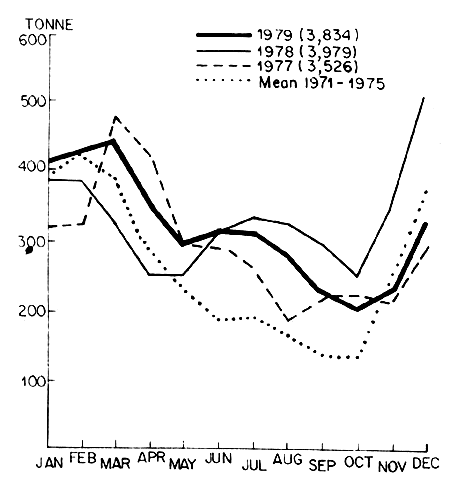
Fig.2 Monthly landings of prawns by trawlers in Sandakan area
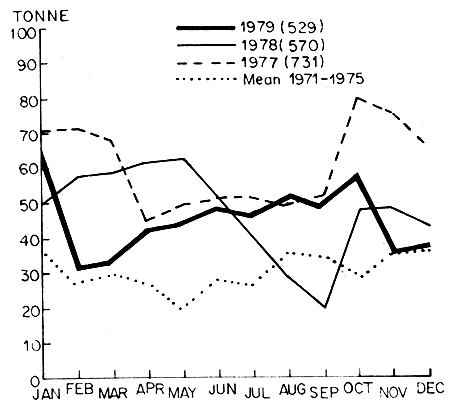
Fig.3 Monthly landings of prawns by trawlers in Tawau area
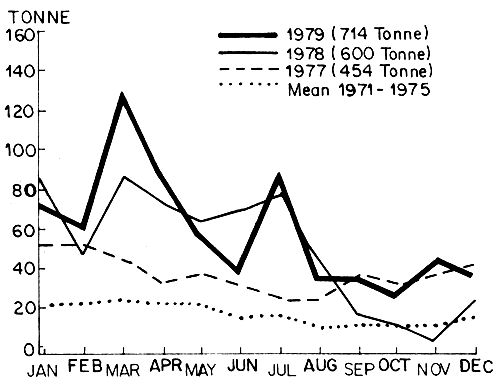
Fig. 4 Monthly landing of prawns by trawlers in Kota Kinabalu area
| Year | Number of fishing craft | |||
|---|---|---|---|---|
| With inboard engines | With outboard engines | Nonmotorized | Total number of fishing boats | |
| 1970 | 1 400 | 2 320 | 300 | 4 020 |
| 1971 | 1 430 | 2 500 | 150 | 4 080 |
| 1972 | 1 470 | 2 495 | 200 | 4 165 |
| 1973 | 1 253 | 2 548 | 497 | 4 298 |
| 1974 | 1 253 | 2 545 | 500 | 4 298 |
| 1975 | 1 131 | 2 705 | 400 | 4 236 |
| 1976 | 1 250 | 2 500 | 300 | 4 050 |
| 1977 | 1 474 | 1 753 | 856 | 4 083 |
| 1978 | 1 758 | 2 077 | 784 | 4 619 |
| 1979 | 2 204 | 2 413 | 930 | 5 547* |
| 1980 | 2 300 | 2 670 | 900 | 5 800 |
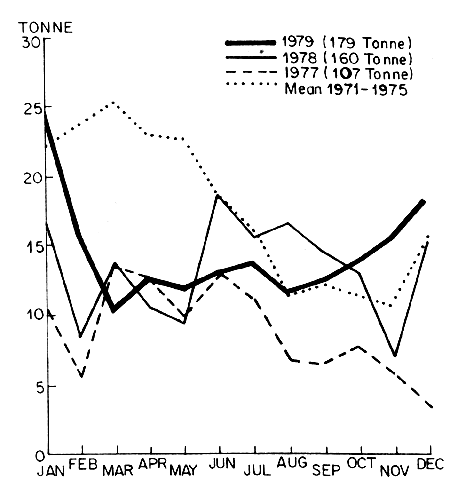
Fig. 5 Monthly landings of prawns by trawlers in Kudat area
There were about 800 prawn trawlers in Sabah at the end of 1979 of which only 594 were licensed for trawling. Unlicensed trawlers are usually smaller in size and engine power, operating in more remote areas of Sandakan, Beluran, Kota Kinabalu, Tuaran and Kudat. They are rather a problem for the Fisheries Department because in many cases, they fish within the designated “Restricted Areas” (Fig. 8 and Appendix 1).
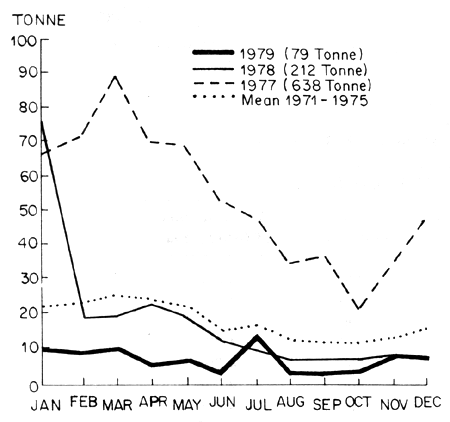
Fig. 6 Monthly landings of prawns by trawlers in Brunei bay area
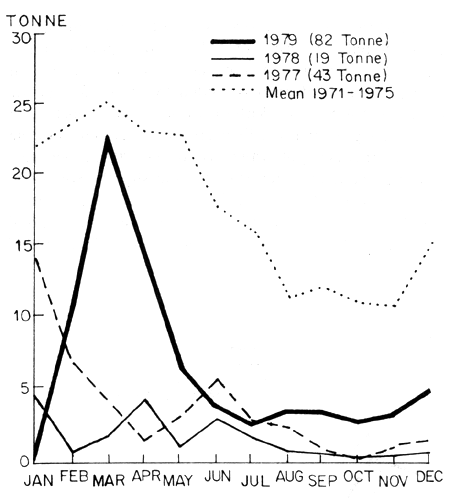
Fig. 7 Monthly landings of prawns by trawlers in Labuan area
The majority of 2 413 fishing boats powered by outboard engines are classed as traditional small fishing boats using such fishing gear as gillnets (bottom midwater and surface), trammel nets, small purse-seines, handlines and lift nets. A total of 544 licences were given for these various methods of fishing and still many are operating without fishing licences.
Most of the traditional fishing grounds are located within 12 n. miles from the shore usually ranging from 5 (9.1 meters) to 20 fathoms (18.3 meters). Foreign built trawlers by law can only fish in waters beyond 12 n. miles from the shore. In such cases, they get mostly fish and little prawn if any.
As the children of fishermen are now more educated, they can usually get shore-based jobs and only occasionally go fishing or not at all. Also, the traditional fishermen of the older generation prefer their children not to be fishermen as they viewed the occupation as tough and unpredictable in terms of incomes. Sabah is now fast developing its light and heavy industries, its agriculture and various other fields creating many shore-based jobs offering good wages. Knowing the hardship of being fishermen, many fishermen's children prefer to leave fisheries. This new trend could only be changed if advancements were made to make fishing a more desirable engagement socially, economically and technologically. Today, only prawns are processed, quick frozen for export, but not fish although comparatively a good amount of fresh fish is landed. When there is a glut of fish, the price just drops rock bottom and vice versa. Thus, the incentive to catch more fish have to be delicately balanced according to demand.
Another feature effecting the value of fish is the role played by the middlemen. They usually provide the initial capital for fuel, nets, provisions, etc., to the small fishermen. Thus, a certain bond commitment is created whereby the middlemen gets his fish at a price he dictates. Ko-Nelayan, a newly formed Fishing Corporation, is trying to eradicate or minimize such exploitation but so far there is little success. The rural outboard fishermen especially are still in the poverty income group. Trawlermen are however much better off as they can get good price for their prawns. Even fish commands a high price in the retail markets (Table 3), but the middlemen get the benefit not the producers.
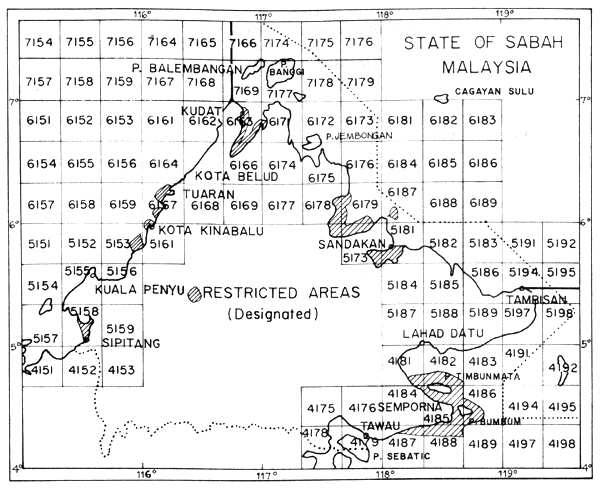
Fig. 8 (see Appendix I for fisheries regulations, Sabah)
In the recent years, the west coast of Sabah have been hit by the occurrences of red tide in 1976, 1977, 1980 and 1981. Each outbreak lasted from 1 to 3 months in one or several areas at a time. During such outbreaks, the income of fishermen regardless of whether they could catch fish or not were severely affected as most consumers just would not buy fish for fear of chronic poisoining by the toxin. This makes fishing as a livelihood even more unpredictable.
2. DEVELOPMENT UNDERTAKINGS
In uplifting the standard of living of the rural fishermen, the Fisheries Department and the Fishing Authority have several programmes being implemented:
2.1 Grants Programme for Boat Building, Fishing Gear and Equipment
This form of grant up to $1 000 is mainly to help the fishermen for the acquisition of outboard engine, fishing net, fish finder, trawl winch, etc. In the earlier part of the programme implementation as early as in the first (1966–1970) and second (1971–1975) Malaysian Plans, a full grant on inboard engines, winches or trawl nets was made to each group of five fishermen in a trawler. Ko-Nelayan, a Fishing Authority in Sabah in the past two years have been looking after these groups of five persons by giving aid in the form of part grant and part loan to acquire engines and other related equipment to facilitate fishing.
2.2 Fisheries Complex, Fisheries Centre, Sales Centre and Landing Jetty
Three fisheries centres for buying/selling fish and block ice have been completed in Papar, Kuala Penyu and Sipitang. They are to provide facilities to enable local fishermen to sell their fish at a better price and to give ample onshore services to fishermen in the handling and storage of their catch. When SAFMA or Sabah Fish Marketing Authority is formed some time this year, more fisheries complexes are earmarked to be built (at least five) in strategic fish landing towns. There is also a plan for 22 sales centres throughout Sabah to expand the fish marketing chain in the state.
| Year and price ($/Kt.) | Increase (+)or decrease (-) percentage between 1978 and 1979 | ||||||
|---|---|---|---|---|---|---|---|
| Town | 1974 | 1975 | 1976 | 1977 | 1978 | 1979 | |
| Kota Kinabalu | |||||||
Prawn | 2.94 | 2.94 | 3.68 | 4.25 | 4.23 | 4.77 | +12.77 |
Fish | 1.38 | 1.55 | 1.55 | 1.67 | 1.77 | 1.73 | - 2.26 |
| Sandakan | |||||||
Prawn | 2.65 | 2.10 | 2.97 | 3.30 | 2.70 | 3.28 | +21.48 |
Fish | 1.90 | 1.54 | 1.48 | 1.51 | 1.55 | 1.88 | +21.29 |
| Tawau | |||||||
Prawn | 1.67 | 2.10 | 1.70 | 2.90 | 2.60 | 3.75 | +44.23 |
Fish | 1.13 | 1.34 | 0.82 | 1.16 | 1.15 | 1.35 | +17.39 |
| Kudat | |||||||
Prawn | 2.00 | 2.50 | 2.00 | 2.50 | 3.23 | 5.33 | +65.02 |
Fish | 1.17 | 1.30 | 1.12 | 1.44 | 1.34 | 1.42 | + 5.97 |
| Lahad Datu | |||||||
Prawn | 2.50 | 3.03 | 5.17 | 3.50 | 3.17 | 4.30 | +35.65 |
Fish | 0.93 | 1.27 | 1.61 | 1.04 | 1.12 | 1.16 | + 3.57 |
| Semporna | |||||||
Prawn | 1.93 | 2.10 | - | 2.00 | 1.55 | 2.53 | +63.23 |
Fish | 0.91 | 1.01 | - | 0.65 | 0.66 | 0.83 | +25.76 |
| Papar | |||||||
Prawn | - | 3.43 | 2.68 | 2.35 | 3.55 | 5.00 | +40.85 |
Fish | - | 1.60 | 1.23 | 1.49 | 1.46 | 1.27 | -13.01 |
| Labuan | |||||||
Prawn | - | - | - | 3.35 | 3.58 | 3.33 | - 6.98 |
Fish | - | - | - | 1.86 | 1.90 | 2.18 | +14.74 |
| Beaufort | |||||||
Prawn | - | - | - | 2.15 | 3.05 | 3.75 | +22.95 |
Fish | - | - | - | 1.85 | 1.82 | 1.63 | -10.44 |
| Beluran | |||||||
Prawn | - | - | - | 1.20 | 1.05 | 1.20 | +14.29 |
Fish | - | - | - | 1.29 | 1.34 | 1.32 | - 1.49 |
| Sipitang | |||||||
Prawn | - | - | - | - | 3.08 | 3.35 | + 8.77 |
Fish | - | - | - | - | 1.86 | 1.75 | - 5.91 |
| Kuala Penyu | |||||||
Prawn | - | - | - | - | 2.15 | 2.63 | +22.33 |
Fish | - | - | - | - | 1.39 | 1.42 | + 2.16 |
| Kota Belud | |||||||
Prawn | - | - | - | - | 2.15 | 3.43 | +59.53 |
Fish | - | - | - | - | 0.95 | 0.88 | - 7.37 |
The fish landing jetties programme introduced in the Third Malaysia Plan has been giving good services to many remote fishing villages. Here, the Fisheries Department helps in the design and finances the construction of a wooden jetty for fish landing and general conveniences for the fishing village. This is a continuing programme and to date many fishing villages have benefited.
2.3 Fishermen Training School — Labuan
The Fisheries Department is in the process of building this school. This has been suggested and put for consideration way back in 1962. In 1980, it was revived and to date the site preparation work is almost complete. The required infrastructure is expected to be ready by late 1983. When ready, the school will upgrade fishermen skills in fishing technology. The school can train up to 60 fishermen a year.
Ko-Nelayan have also established their training centre in Labuan for trawl fishermen and small business management for fishermen. The school has been in operation since early 1980.
2.4 Aquaculture Projects
Both the Fisheries Department and Ko-Nelayan have several projects in aquaculture such as the rearing of grouper of the serranidae (Epinephelus sp), red snapper or the Lutjanidae (Lutjanus sp), seabass the Latidae (Lates sp), milkfish, the Chanidae (Chanos chanos), oysters, cockles, seaweeds and prawns. It is hoped that fishermen can benefit from these projects especially in fishpen culture by being part-time fishfarmers or even going into it full-time. The progress has now demonstrated that all trials concerning fishfarming are viable. The next step is to establish a reliable source of fish fry to provide ready fry supplies. Presently, fish fry are caught from the wild. Recently, a joint agreement was signed between the State Government and ICLARM to look into the establishment of an aquaculture hatchery in Sabah.
Oyster project in Sungei Mapan, Tawau has demonstrated a great promise. Spats are collected from the wild and grow very fast. However, the commercial operators have been slow in taking up their development.
2.5 Fisheries Enforcement
This is another important aspect that needs strengthening. Plans are in hand to acquire two fast fisheries protection vessels to patrol the restricted areas. The required personnel will also be increased.
Another research vessel is being requisitioned since April 1982 and other training vessels are expected to be completed at the end of the year. These are all built locally by the well established boat building industry.
The Fisheries Department assists artisanal fishermen and fishfarmers in providing grants and subsidies in the drive to produce more fish protein as a means to uplift their standard of living. In 1979, 7 719 tons of fisheries products were imported valued at $12 822 101.
Research is also being carried out on marine resources and on aquaculture potential to avoid the present dependence on penaeid prawns capture fisheries. However, much emphasis is being put on aquaculture in view of the availability of suitable areas for such purpose.
3. PROBLEMS PRESENTLY CONFRONTING THE SMALL FISHERMEN
The penaeid prawn fishery is believed to be in its saturation point now as the catch per unit effort has been on a decline. Some desperate fishermen thus, readily violate the conditions of the restricted areas by fishing inside these areas thus damaging the nursery grounds. Conflicts of interest from various land uses including reclamation schemes and pollution from industries have changed the ecology of the coast. In 1970, e.g., Sepangar Bay supports a good prawn fishery but now there are hardly any prawn in that bay.
Traditional handline fishermen using outboard engines are also facing problems. Although artificial reefs have been created in an attempt to revive the stocks, they are frequently destroyed by the operation of trawlers.
There are probably still good fishing grounds further offshore. These grounds if present cannot be fished by the existing small boats with short endurance.
Cost and earning data from fishermen are usually not reliable even though they have been collected from various fishermen surveys. Most fishermen work 12 to 15 hours per fishing trip. Their earnings vary considerably.
Fish are usually sold to middlemen or fish retailers in the fish markets. Papar fish market is the only place to which fishermen bring their catch and do the retailing themselves. On the whole, the fishermen do not gain much because of the limited demand for fish. Fish storage facilities are not available in many urban fish markets. Thus, by late evening fish price drops sharply. The bulk handling and preservation methods used are poor and fish have to be sold and consumed rather quickly making the price very elastic.
There are at present 13 prawn processing factories engaged in quick block freezing of fresh prawns (usually 5 kg pack) for export market. The local market and price for prawns have been good. Fresh fish are hardly processed aiming at the local consumer market. There are also several ice-making factories all of which produce ice blocks of 50 kg each. In Kota Kinabalu, a 50 kg ice block costs M$5.00. It varies from place to place. In Sandakan, for example, each block costs from M$3.50 to M$4.00.
Most trawlers carry ice blocks on board when they go out fishing. Day fishermen hardly use ice on board. Landing facilities are rather poor in most places making it difficult to maintain the quality of fish for any length of time in the warm weather. Table 4 provides ice production and cold storage capacities for each of the main townships in various parts of Sabah. Table 5 shows the annual quantities of processed prawn for 13 companies.
Socially, the traditional fishermen are considered in the poverty group as shown also by their standard of living. The government is now giving more help to them through various agencies. The unsteady income of most fishermen can also be a problem, and in recent years their loss of income resulting from damages to resources caused by red tide has necessitated the assistance of the Social Welfare Department.
A fishermen settlement scheme was implemented in late 1970's whereby ample amenities for a community unit were provided; but the results have not been encouraging.
| District | Daily ice production capacity (tons) | Cold storage capacity (tons) |
|---|---|---|
| Labuan | 13.00 | 135.00 |
| Penampang | 15.91 | 40.00 |
| Kota Kinabalu | 10.23 | 15.00 |
| Kudat | 19.53 | 20.32 |
| Sandakan | 102.20 | 812.95 |
| Lahad Datu | 0.90 | 0.16 |
| Semporna | 5.08 | 7.37 |
| Tawau | 30.55 | 401.06 |
| Total | 197.40 | 1 431.86 |
From statistics, there have not been any significant increase in fish landings since 1978. In 1981, there was a decrease. There are not many local people who venture into fishing. Some prawn trawlermen have sold their boats and absorbed by other shore business. Most of those interested in fishing for fish now are trawlermen from Peninsular Malaysia, where demersal and pelagic fish resources are still available in densities warranting exploitation. There are also enquiries from other ASEAN member countries interested in joint-venture for pelagic fishing using the purse-seine. From studies, there seems to be potential for a pelagic fishery especially within the EEZ limits. However, there will be the need to establish infrastructure and markets in Sabah and overseas if the fishing industry is to be developed and/or expanded.
4. DISCUSSION
Appendix II -- a, b, c and d are for comparison study with Fig. 1.
| Name of companies | Total production export per year (tons) | |
|---|---|---|
| 1. | Koperasi Serbaguna Nelayan Sabah, Bhd., Labuan | 150 |
| 2. | Henho Corporation, Kota Kinabalu | 180 |
| 3. | Hai Leng Enterprise Sdn. Bhd., Kota Kinabalu | 180 |
| 4. | Angkasa (Sabah) Sdn. Bhd., Sandakan | 400 |
| 5. | Kolapis Marine Products Sdn. Bhd., Sandakan | 500 |
| 6. | Syarikat Seng Wah Sdn. Bhd., Sandakan | 420 |
| 7. | North Borneo Fishing Co., Sdn. Bhd., Sandakan | 450 |
| 8. | Tung Hai Fishing Sdn. Bhd., Sandakan | 250 |
| 9. | Syarikat Perikanan Hing Lee, Sandakan | 430 |
| 10. | Syarikat Ket Fah Enterprise Sdn. Bhd., Sandakan | 110 |
| 11. | Unistate Seafood (Sabah) Sdn. Bhd., Tawau | 150 |
| 12. | Kalimantan Fishery Sdn. Bhd., Tawau | 300 |
| 13. | Tawau Seafoods Sdn. Bhd., Tawau | 300 |
APPENDIX I
CONDITIONS FOR TRAWL FISHERY, TYPE A
(CONDITIONS FOR GULF-COAST AND SABAH TYPES PRAWN TRAWL FISHERY)
1. Type A trawlers are Not permitted to carry out trawl fishery operation with the following areas:
The sea between the State shore and the 5-fathom line.
Within areas “L” and “N”. Area “L” lies South of a line drawn from Mattunggong River to Mempadak in Marudu Bay; end area “N” is enclosed by a line from P. Kalumpang running due East along Lat 4°20'N to long. 118°40'E, thence North to Lat 4°20'N and thence West until mainland is reached.
Within three miles from shore between Tg. Kaitan and Tg. Indeh at Kuala Mengkabong (West Coast).
Sapangar Bay, Gaya bay, Sandakan Harbour, within 5 miles off Pulau Dinawan and East of Pulau Manukan.
Within the Eastern side of the line drawn from Tanjong Marintaman to Sungai Bankeduan in the Padas Bay.
Within three miles from shore in Labuk Bay between Tanjong Niug and Tanjong Pandaras.
Within 1½ miles of 5-fathom line, whichever is farther from shore in the Marudu Bay between Tanjong Perawan and Tanjong Agong-Agong.
Within one mile from the shores of the Turtle Islands, namely; Pulau Silinga, Pulau Bakungan Kecil, Pulau Gulisan and Pulau Libaran.
2. Type A trawlers with trawl fishery licences issued in Labuan, Beaufort, Papar, Kota Kinabalu and Kota Belud are only allowed to fish in the West-Coast Region - from Tanjong Sempang Mangayau, Kudat to Brunei Bay (Sabah Sector); those with licences issued in Kudat, Beluran and Sendakan are only allowed to fish in the East-Coast Region - from Tambisan to Tanjong Sampang Mangayau, Kudat; and those with licences issued in Lahad Datu, Semporna and Tawau are only allowed to fish in the Tawau Region.
3. The minimum size of mesh in any trawl net used shall be not less than one and half inches (1½ inches) stretched when wet.
4. A monthly fishing record, including catch and locality of fishing ground, shall be submitted not later than the 15th day of the following month to the following offices:
The Fisheries Officer East-Coast, P.O. Box No. 1369, Sandakan, for the trawlers fishing in the East-Coast Region.
The Director of Fisheries Officer, Mail Bag No. 107, Kota Kinabalu, for the trawlers fishing in the West-Coast Region.
The Assistant Fisheries Officer, P.O. Box No. 616, Tawau, for the trawlers fishing in Tawau Region.
5. Any small fish caught should be brought to the market for sale and not to be thrown into the sea.
6. The above conditions are subject to changes as and when required without advance notice.
Appendix II (a)
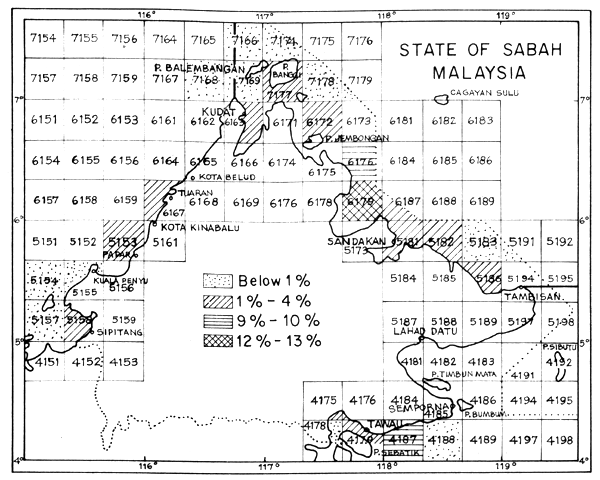
Appendix II (b)
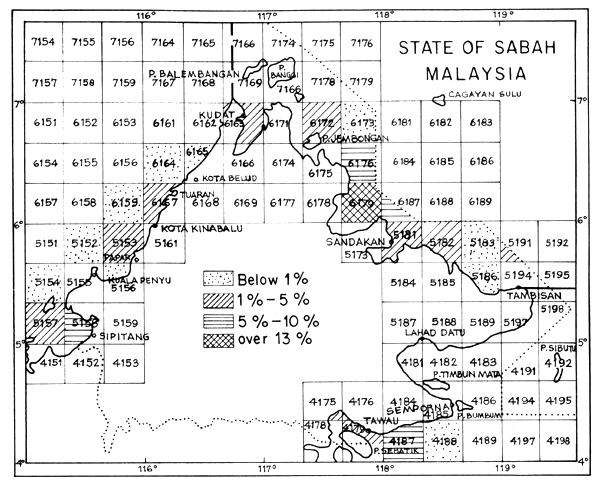
Appendix II (c)
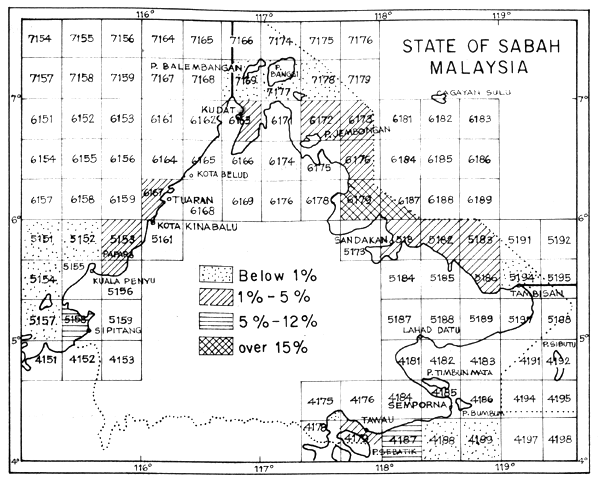
Appendix II (d)
